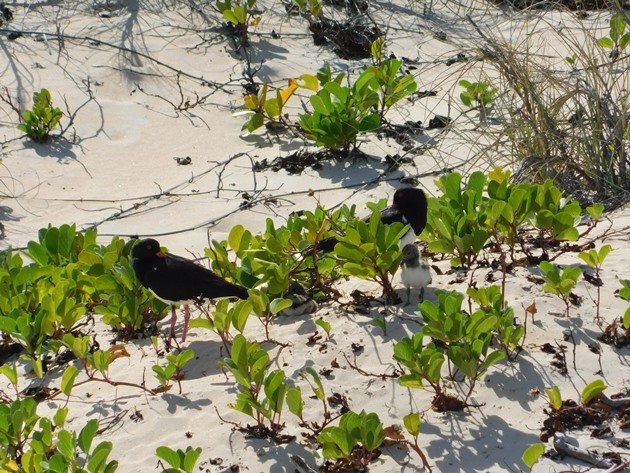
We have observed the first Pied Oystercatcher chicks of 2019 over the past two weeks grow steadily. It is quite unusual to still have two chicks at this stage, because we usually lose one within the first ten days of hatching. In fact we often don’t have any chicks within two weeks of the eggs hatching and other pairs along the coast have not been successful yet this season. More eggs have been laid and hopefully other pairs of Pied Oystercatchers will soon have young to care for. It is quite common for several clutches of Pied Oystercatcher eggs to be laid during the breeding season and often within ten days of egg or chick loss.
Over the two weeks since I first introduced you to this family of Pied Oystercatchers there has been a lot of walking. Adult Pied Oystercatchers do tend to walk a lot more than fly and the chicks won’t be able to fly for about five weeks. This family of Pied Oystercatchers have not only walked in and out with the tides, which are big in Broome, but also moved about two kilometres north. They travel through the dunes where there is shade among the vegetation and some protection from predators.
It has been very windy towards the end of this week and the Pied Oystercatcher family were not at the tide edge feeding like normal. The wind was just too much and they sheltered together in the vegetation at the high tide mark. In the photo above there is one chick trying to avoid the wind under the vegetation to the right of the tail of the Pied Oystercatcher on the left. In the photo below the chick in front of the adult on the right is rearranging its breast feathers! You can also see that the legs of the chicks are almost as wide as the adults!
Pied Oystercatcher family
Male Pied Oystercatcher and two chicks
The young Pied Oystercatchers have grown very fast and can feed themselves, but also take larger items of food that their parents can get from deeper in the sand. The length of the bills of the Pied Oystercatchers varies slightly and the male bill is shorter and wider. The two chicks appear to favour being close to the male bird and this is most likely due to the male bird being on the eggs when they hatch. The Pied Oystercatchers share incubation of the eggs and either could be on the eggs when the chicks emerge.
Female on the left and two chicks next to the male Pied Oystercatcher
Male Pied Oystercatcher and two chicks
Male Pied Oystercatcher and “kneeling” chick
You will notice that the bills of the Pied Oystercatcher chicks have grown significantly over the two weeks and their body weight will have increased significantly despite all of the walking they have done. The Pied Oystercatcher chicks are also quite well camouflaged in the vegetation.
Pied Oystercatcher chick sheltering from the wind
When I took the photo below I did not realise how close together the two Pied Oystercatcher chicks were to each other until I got home! Unfortunately I only got half of the face of the one on the left, but it is still quite a nice photo to show the development of the bill over two weeks.
Pied Oystercatcher chicks
The next three weeks are critical to their survival. They are close to a section of reef now, which offers good food and a bit further from the worst of the four-wheel drive traffic. There are still very real threats of predation by feral cats and birds of prey, but we just have to be optimistic. Five years ago there was actually a successful breeding event where all three eggs, instead of the usual two, hatched and fledged. It is definitely time for a successful breeding season for at least one pair this year.

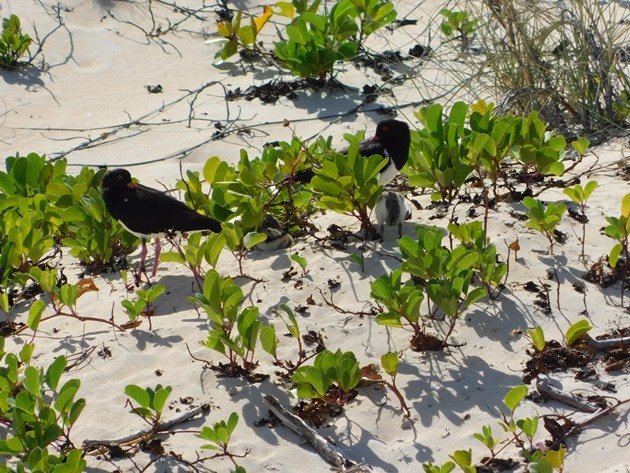

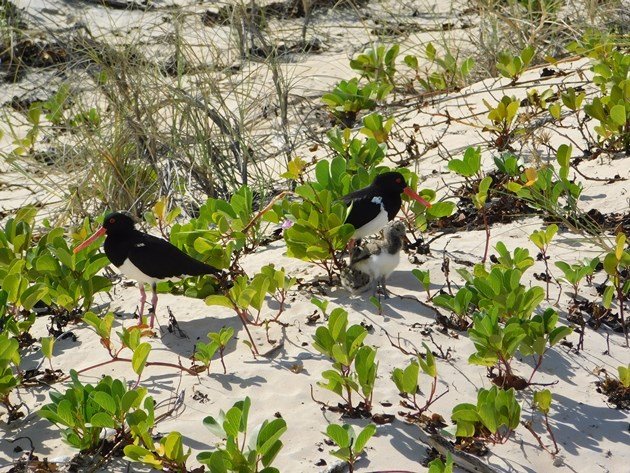
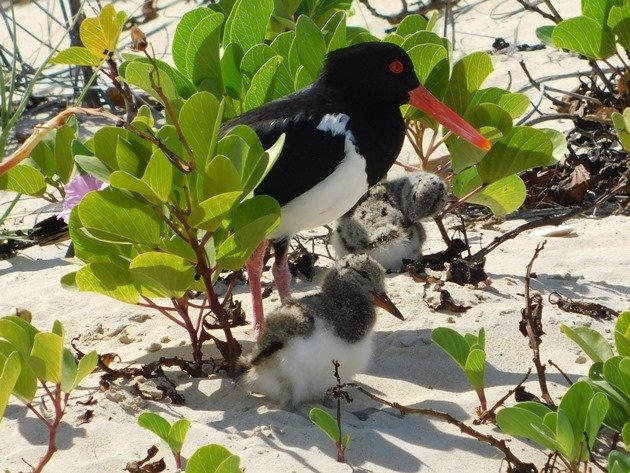
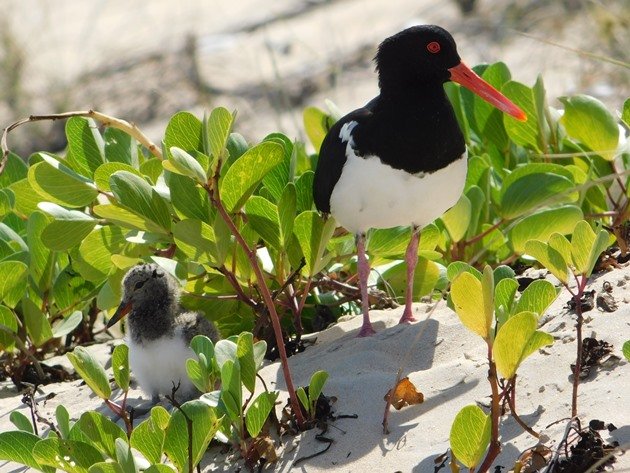
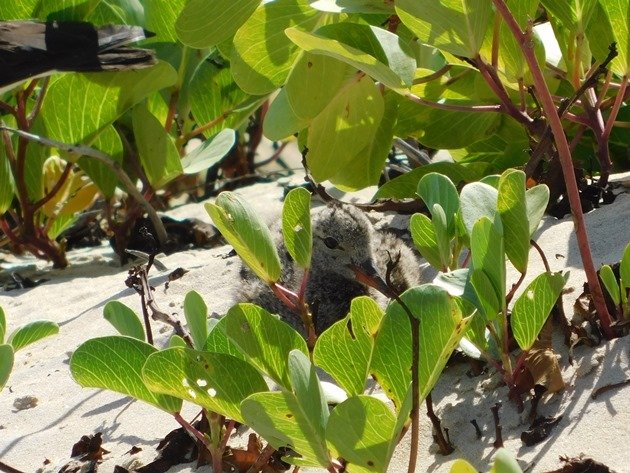
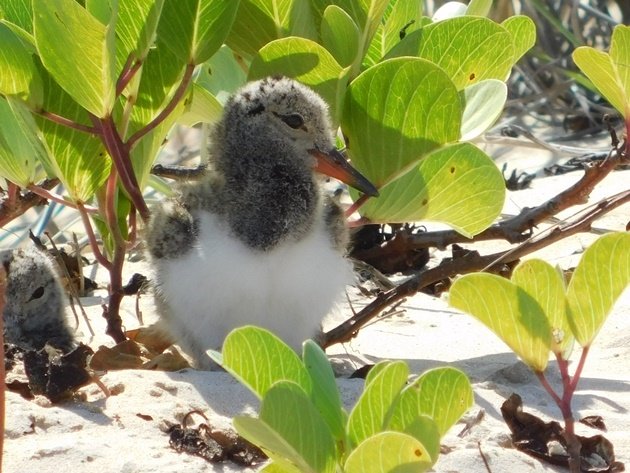










Great news 🙂